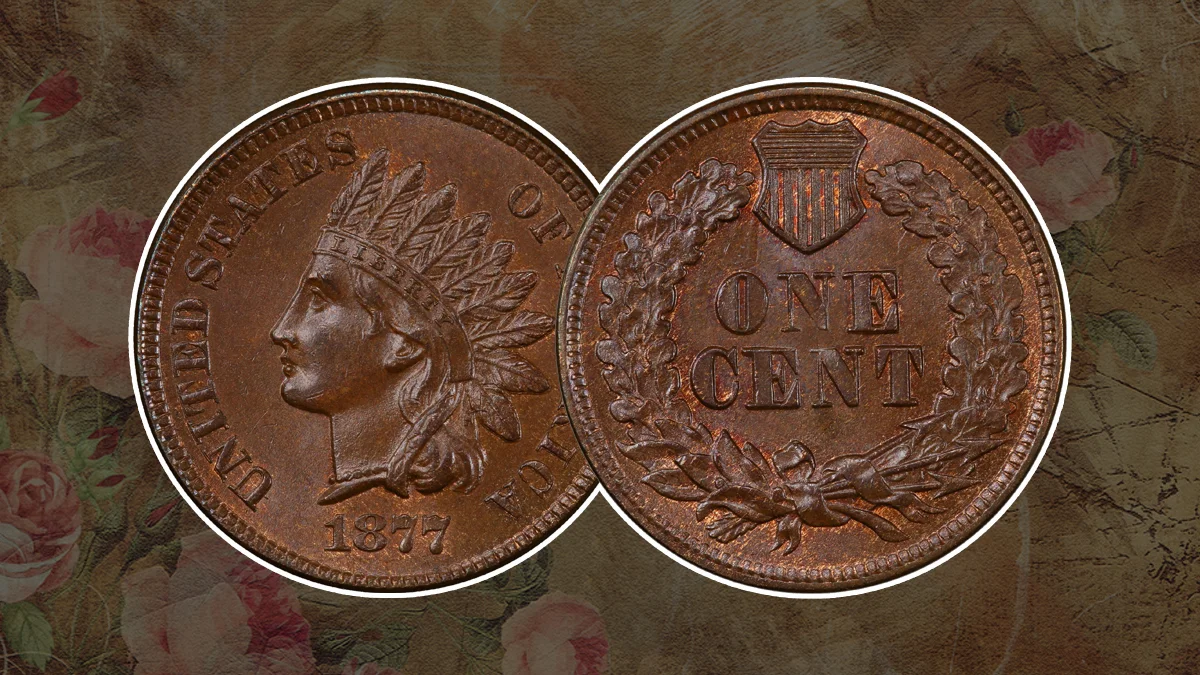
Are you of an 1877 Indian Head penny, or are you contemplating adding this coin in your collection? Indian Head pennies from 1877 are not only very old but also have a special place among collectors because of their rarity. With the second-lowest mintage in the entire Indian Head penny series, after the 1909 coins, the 1877 penny is a key date that generally demands a high premium. This article explores the coin’s history, specifications, design, types, and grading tips, helping you understand its value and importance.
History of the 1877 Indian Head Penny
The 1877 Indian Head penny is part of the Indian Head cent series, minted from 1859 to 1909. It replaced the Flying Eagle cent, which had proven costly and challenging to produce because of its high-relief design. The Indian Head penny was introduced as a more practical low-relief coin, starting in 1859.
The Mint had previously used a copper-nickel composition for the cent but switched to a bronze alloy of 95% copper and 5% tin and zinc in 1864 due to wartime metal shortages. By 1877, economic difficulties led to a much lower mintage of only 852,500 cents, making it a key date for collectors. The only other year with a lower mintage is 1909 when only 309,000 coins were struck before the Lincoln cent replaced the Indian Head penny.
Specifications of the 1877 Indian Head Penny
- Composition: 95% copper, 5% tin and zinc
- Diameter: 19.00 millimeters
- Weight: 3.11 grams
- Mint: Philadelphia (no mint mark)
Design
Obverse
An image of Lady Liberty facing left and with a Native American headdress appears on the obverse. She wore a beaded necklace and a ribbon with the words “LIBERTY” written on it. “UNITED STATES OF AMERICA” is written on every side, with the year “1877” at the bottom. Small denticles decorate the coin’s edge.
Reverse
The reverse shows two oak branches tied together with a ribbon. The design has three arrows, symbolizing the defense of liberty, and a shield with thirteen stripes representing the original thirteen states. The denomination “ONE CENT” is prominently featured in the center.
Types and Rarity
There are two main types of 1877 Indian Head pennies:
- 1877 No-Mint Mark Indian Head Penny: Struck at the Philadelphia Mint, where no mint mark was used.
- 1877 Proof Indian Head Penny: Approximately 900 proof coins were struck, though the exact number is not known.
Condition and Grading
Grading the 1877 Indian Head penny depends on its condition. Here are the grading levels:
- Good (G): Heavily worn, with most details flattened.
- Fine (F): Moderate wear, with most details clear.
- Extremely Fine (EF/XF): Light wear, with most details intact.
- Uncirculated (MS): No wear, with full original luster.
Value of 1877 Indian Head Penny
Here is a summary of the 1877 Indian Head penny values based on condition:
- 1877 No-Mint Mark Indian Head Penny Value:
- Good: $585
- Fine: $1,175
- Extremely Fine: $2,650
- Uncirculated: $4,850
- 1877 Proof Indian Head Penny Value:
- Uncirculated: $11,000 (with some examples reaching $36,000 for Cameo proofs)
Rare Errors and Varieties
Several rare errors can increase the value of an 1877 Indian Head penny:
- Off-Center Strike: Coins with off-center strikes can be worth between $130 and $300, depending on the degree of misalignment.
- Strike-Through Error: Coins that have large strike-through errors may be valued anywhere from $1,000 and $2,000, depending on the size of the challenge they are.
Also Read – 1926 S Lincoln Penny: A Complete Guide
Conclusion
An 1877 Indian Head penny is a valuable and famous coin because of its rarity and historical value. With its unique features, limited production, and a strong desire among enthusiasts, this coin may achieve high premiums. Its rating, specifications, and history will all be clear to you when you understand and evaluate its value. Choose an authorized website for accurate assessments if you want extra help with selling or determining your coin.
